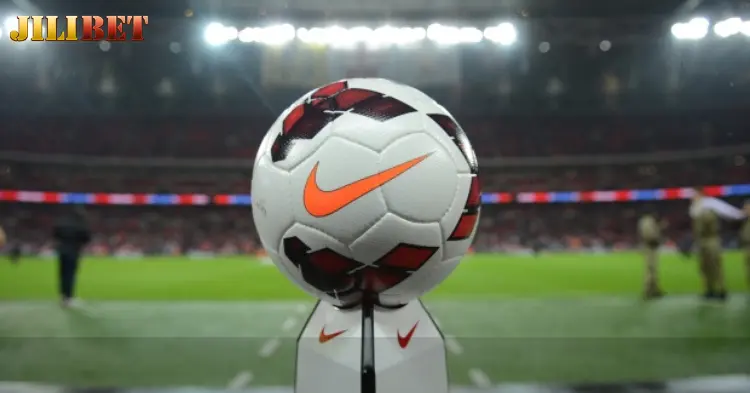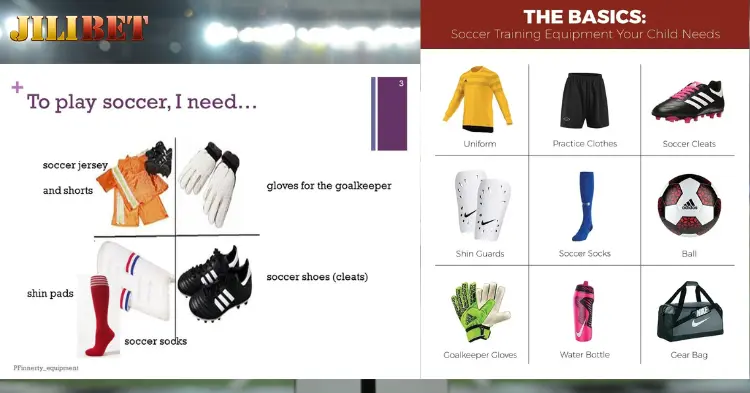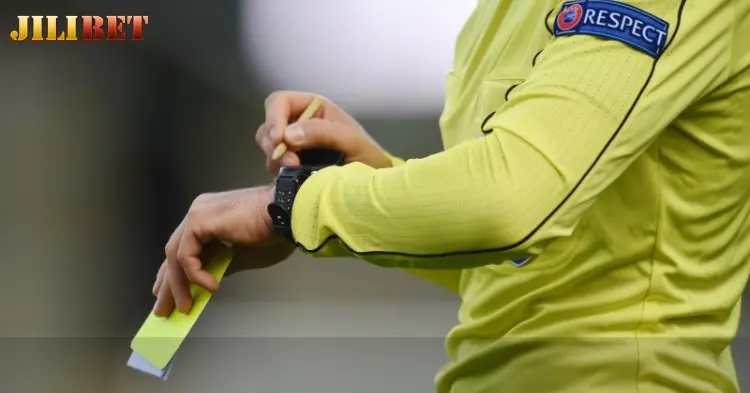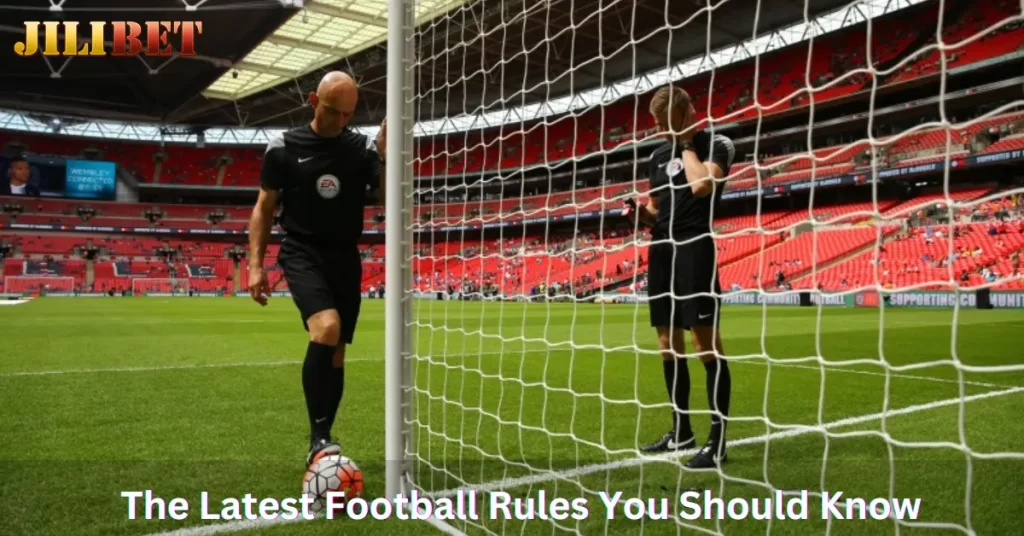Overview Football Rules
Football rules consist of a unified system of regulations applied to football matches. These rules are issued by the International Football Association Board (IFAB).
This system of rules is implemented globally. All players, coaches, referees, and fans must thoroughly understand these regulations to ensure matches are conducted fairly and consistently. When stepping into the world of football, you should be aware of the following basic rules.
Football Rules About the Field
The football field is a rectangular area where players compete. Its dimensions are 105 meters in length and 68 meters in width. The two longer boundary lines are called touchlines, while the shorter ones are the goal lines. A centerline divides the field into two equal halves.
A circle with a radius of 9.15 meters is located at the center of the field, known as the center circle, with the kickoff point at its center.
At each end of the field, between the two goal lines, lies the goal area. Each team’s goal is positioned here, measuring 7.32 meters wide and 2.44 meters tall. Surrounding the goal is the penalty area, also known as the 16.5-meter box, where goalkeepers are allowed to handle the ball.

If a player commits a foul within this area, a penalty kick is awarded. Penalty kicks are taken from the penalty spot, which is 11 meters away from the goal.
A smaller box within the penalty area, closer to the goal, is called the 5.5-meter box. This area is designated for goal kicks. At each corner of the field, there are four corner spots for corner kicks.
The playing surface is typically covered with natural or artificial grass, and it must be green.
Football Rules About the Ball
The ball must be made of leather or a similar material and must be spherical. There are five standard sizes for footballs, numbered from 1 to 5. The official ball used in professional matches is size 5.

Size 5 balls are used by players aged 15 and above. They weigh between 410 and 450 grams, are inflated to a pressure of 0.6 to 1.1 atmospheres, and have a circumference of 68 to 70 centimeters. Youth leagues (depending on age group) use smaller-sized balls.
=> Read more: The goalkeeper Handles the Ball Outside the Penalty? What happens?
Football Rules About the Number of Players
A standard football match involves 10 outfield players and 1 goalkeeper per team on the field simultaneously. A match cannot proceed if a team has fewer than 7 players on the field.
According to regulations, in official matches, each team is allowed to make up to three substitutions (including the goalkeeper) per game. For this reason, teams often have more than 11 players. Substitute players enter the field to replace those who are tired or injured.
In youth tournaments, the number of substitutions allowed is often increased. In friendly matches (which are not officially scored and are intended for practice or exhibition purposes), there is no limit to the number of substitutions. However, players who have been substituted out cannot re-enter the match.
Football Rules About Player Equipment
The first essential piece of equipment for every player is football boots, typically specialized for the sport. Additionally, players must wear socks and a pair of shin guards, which must be fully covered by the socks.

A team’s uniform includes shorts and a jersey (short-sleeved or long-sleeved). Goalkeepers wear distinct outfits to differentiate themselves from the other players. Their gear includes shorts, a jersey (either long or short-sleeved), and gloves. The uniforms of the two teams must have different colors for clear distinction.
The referee has the final say in inspecting player equipment. Players who do not comply with these regulations will not be permitted to participate in the match.
=> Read more: What is Match Fixing? Signs of Match-Fixing Behavior
Football Rules About the Main Referee
A standard match features one main referee, who moves across the field to monitor the game and oversee the players. The main referee holds the highest authority on the field.
The referee’s primary duty is to ensure the match is conducted fairly and adheres to the rules. As such, the referee’s decisions are considered final. Players may face penalties for protesting or disputing the referee’s calls.
The referee’s attire includes a jersey, shorts, socks, and boots, all of which must differ in color from the teams’ uniforms to avoid confusion. The referee is equipped with a whistle to control the game and carries yellow and red cards for penalizing players in cases of serious fouls.
Football Rules About Assistant Referees
Assistant referees support the main referee in managing the match. Typically, there are two assistant referees positioned along the touchlines, one on each half of the field. These individuals are often referred to as linesmen. Their attire is similar to the main referee’s but does not include a whistle.
Instead, assistant referees use a flag with a triangular design on a handle. When a foul is committed, they raise the flag to notify the main referee. Their duties also include monitoring whether the ball has gone out of play or entered the goal.
Football Rules About Match Duration
A standard football match lasts 90 minutes, divided into two halves of 45 minutes each. Each team plays on one side of the field for a half and switches sides for the other half.

There is a 15-minute break between halves for players to rest and receive instructions from their coaches. If the match is interrupted due to injuries or other stoppages, additional time, known as stoppage time, is added at the end of each half.
In knockout-stage matches where a winner must be decided, extra time is played if the scores are tied after 90 minutes, including stoppage time. Extra time consists of 30 minutes divided into two halves, with teams switching sides and resuming play immediately after the first extra period without a break.
=> Read more: Football Betting Tips to Boost Winning Odds on Betting Platforms
Football Rules About Starting and Restarting Play
Each half begins with a kickoff at the center of the field. If one team takes the kickoff in the first half, the other team will do so in the second half. A coin toss determines which team gets to kick off.
Each team chooses a side of the coin, and the winner of the toss decides whether to kick off or allow the opposing team to do so. The team taking the kickoff performs it from the center spot. After a goal is scored, play is restarted with a kickoff by the conceding team.
Football Rules About the Ball In and Out of Play
The ball is considered in play as long as it moves on the field and is under the control of the players. It is out of play in the following scenarios:
- When the ball completely crosses the goal line into a goal.
- When it crosses the touchlines or goal lines.
- When the referee blows the whistle to temporarily stop the match for any reason.
=> Are you looking for a reputable and top-quality casino for betting? Try our partners: PH777.
Football Rules About Scoring Goals
The objective of football is to score goals against the opposing team while preventing them from scoring. A goal is considered valid when the ball completely crosses the goal line into the net.
At the end of the match, the team with the most goals scored is declared the winner.

